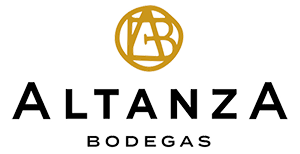
Carlos Ferreiro
Technical director and oenologist at Bodegas Altanza
_
” We used to be guided by sensations, now we have more information”
Digitalization in the wine sector has caused the reorientation of wineries towards the application of new technologies. Many of the analog processes have needed to be updated, transforming traditional methodology into more innovative procedures. “In the beginning, we were guided mostly by sensations and by exhaustive analysis of the state of the vineyard in a more visual and manual way. We studied whether the plant was balanced, whether it had the necessary vigor, and that was what marked the times in all the processes”, explains Carlos Ferreiro, technical director and winemaker at Bodegas Altanza.
The winery was created in 1998 by a group of wine-loving friends, some with extensive experience in the winemaking sector. Preserving its close-knit culture, it has managed to adapt to digitalization to meet the needs of the market. “Our philosophy has always contained innovation and growth within our fundamental pillars. We have always sought to exalt the values of the DOCa Rioja”, highlights Ferreiro.
“Our philosophy has always contained innovation and growth within our fundamental pillars. We have always sought to exalt the values of the DOCa Rioja”.
Bodegas Altanza has worked progressively to incorporate the various transformative elements in all its sectors, in order to improve inventory control and sales, monitor the production process and automate certain tasks. “Apart from the relevant investments in developing the Digital Marketing Department, we have bet on the continuous growth of our online store, continuously adapting it to the needs of our customers”, the expert continues. “We have also implemented an online visit management engine that facilitates the organization of all reservations related to wine tourism”, he adds.
Bodegas Altanza has also developed a comprehensive R+D+I sustainability plan, focused on creating a precision viticulture system, incorporating dendrometers to see the physiological state of the vine and humidity probes. On the other hand, aerial monitoring is carried out for zoning, also counting on a system of calicatas that show the composition, root system and nutrients of the soil. “All this is recorded and generates very valuable information for us to make informed decisions and achieve excellent quality levels”, he adds.
The adaptation to this new reality has been progressive: “We are very grateful to have great professionals in the sector who are open to new changes and challenges. We are also very pleased to have developed a good loyalty network with our customers. There are still many challenges to continue working on: production, bottle-to-bottle control, temperature probes, quality and traceability, as well as digital marketing, online sales and the use of data analysis tools.
To this end, the sector needs a joint collaboration between wineries and technology companies to speed up this digitization process. “Times are different now. All processes, especially everything related to online sales and management of social networks, require immediacy and response times that have nothing to do with the winemaking and aging times”, Ferreiro points out. “For this reason, we have different collaboration agreements that allow us to work hand in hand to share our product, the result of the effort and knowledge of all the people who are part of their processes”, he concludes.
